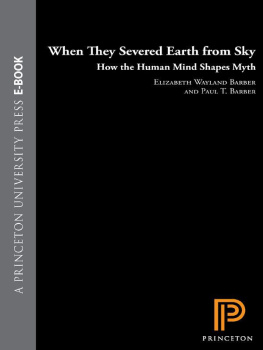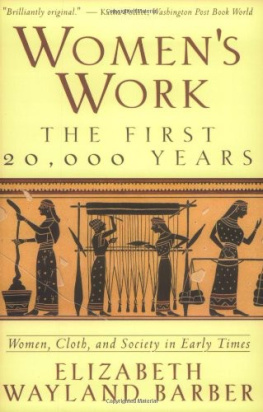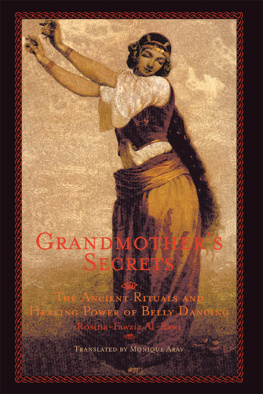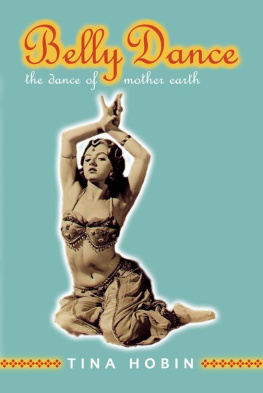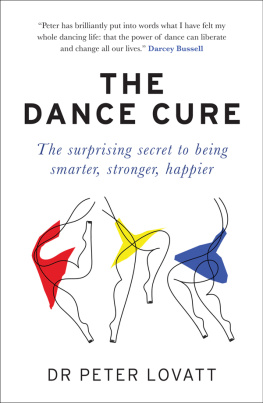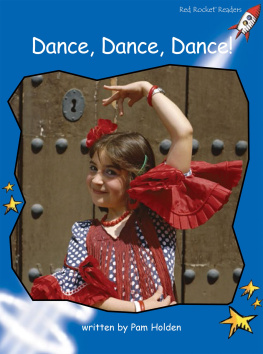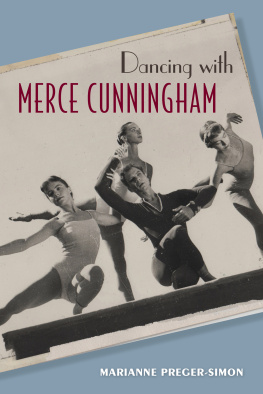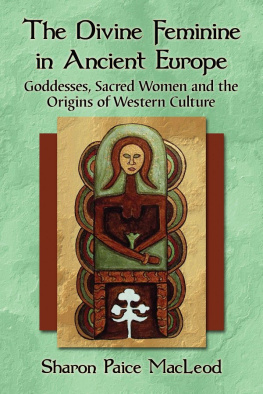
The
Dancing
Goddesses
Folklore, Archaeology, and
the Origins of European Dance

Elizabeth Wayland Barber

To
Ann
beloved sister and colleague,
who taught me to read when I was five,
taught me a czardas when I was six,
supported my far-flung endeavors,
and watched over me
all my life
Although such enactments [of dance rituals]... cannot now be regarded as sacred there still clings to them a compulsion to perform them on their due date (and no other): a conviction that to omit their performance would be unlucky, a belief that their performance will bring luck: that is, that the representation of an effect will produce the effect desired.
Margaret Dean-Smith
(quoted by Violet Alford 1978:xix)
Contents

How dance was thought to bring life
Introduction, through folktales, to some Dancing Goddesses (vily, rusalki, willies, etc.) of eastern European folklore
How nonliterate farmers devised and kept their agricultural (seasonal) calendar
Fertility rituals of early spring
Dance ritual of leaf-clad orphans to end drought; problems of rain and hail
Fertility rituals of Semik, Trinity, and Rusalia Week; dance brotherhoods of Rusalia; perils of Mad Wednesday
Plants the willies love and hate; plants to heal, protect, and bewitch
Fertility rituals of St. Johns Night: herbs, water, fire; childs sleeve dance
Curious history of the weekday sacred to female deities
Midwinter Rusalii, during intercalary Twelve Days: propitiating good and bad spirits for the New Year (and whence came our Yuletide customs)
Finding a bride
Rituals testing a girl for marriage. Can she make the food and clothing?
Is she strong enough to do all the farm work, too?
More relics of dancing Swan Maidens
Shape-changing spirits
Old witches keeping ritual knowledge, training young women
Shamans and wizards, battling for communal good
Medieval evidence for rituals and beliefs
Roman evidence for the rituals
Classical and Archaic Greek evidence; Dionysos and Thrace
Minoan and Mycenaean evidence; from Indo-European horse rituals to a childs hobbyhorse
Evidence that this whole belief system began with the first farmers of Europe, 60003000 BC
What cognitive science has learned about human dance; trance-dancing and firewalking
Possibilities of reconstructing the dances
Parallel stories from Greece and Japan of angry fertility goddesses made to laugh by obscene dance: dance restores life

A s I perused a nineteenthcentury Russian folktale one day, a Dancing Goddess caught my eye. She was new to me, yet I instantly saw that I already knew her from medieval Slavic artifacts, and indeed from Classical and preclassical Greek ones, though scholars scratched their heads as to who she might be. Startled, I took up the chase, searching for her and her sisters throughout the ethnographic lore and archaeological reports from eastern and southeastern Europe. For fifteen years I knew not where the paths led; I could only collect each twig of information along the way, until eventually (as the Thracian firedancers would say) my road was opened to the ancient patterns. Why was I so smitten? Because as a folkdancer I had danced beside the Dancing Goddesses all my life without knowing it.
Folkdancing swept the United States as a cheap, popular pastime during the great Depression and World War II. Unfortunately, the war made it increasingly hard for women to find the male partners required by our Anglo-German dance tradition, so recreational folkdancers began exploring the vast pool of partnerless line dances of the immigrants from eastern and central Europe. Now one could go alone to a dance and not be a wallflower.
I grew up in those international folkdance groups (and in ethnically specific ones, too); the mysteriously addicting dances have colored my entire life. Training as an archaeologist and linguist, I centered my career at first on Greece, which at that time meant studying only Mediterranean cultures and languages. But my folkdancing drew me always northward, where I stumbled over many ancient archaeological connections to Greece and to the long development of the folk costumes that we lovingly collected and wore as dancers. Fascinated by the time depth, I began to enlist every science and language at my disposal to illuminate their collective history. Gradually I sensed that the dances, toothough sheared from their cultural moorings and even more evanescent than the textiles and costumescould perhaps be traced. Then I encountered the Dancing Goddesses.

This, then, is a book about dancing, and about an ancient European tradition of beliefs that sought to influence the flow of life by means of dance . Human dance paid honor to, entreated, and even channeled for the female spirits thought somehow to dance life into existence. Many relics of this tradition have come down to usnot just as dance but also as symbols, words, superstitions, and calendar customs from New Year through Easter, Midsummer, and Christmas. Unable quite to part with them, we continue to share them with our children.
The tradition seems to have begun with the first farmers of Europe, nestled in the heart of the Balkans and the arms of the Danube, long before writing was invented; and it continued for millennia among people who knew little or nothing of literacy. What knowledge they thought important they passed down through visual apprenticeship and oral tradition. Among the visual were crafts, dances, and rituals; among the oral: myths, songs, stories, and language itself. Some of this worldview spread across Europe with agriculture, six or eight millennia ago. Two millennia ago, Christianity began, soon challenging the old beliefs. Four hundred years later, as we shall see, Catholic versus Orthodox Christianity began to split the tradition in two, with far more surviving in the East than in the West; but the original unity can still be glimpsed in remote rural pockets.
In that conservative, nonurban, and often precarious way of life, dance formed and still forms a sort of glue holding people and life together, bonding communities. It mediated lifes joy, pain, hopes and fears, love, hate, tedium, and tingling expectation. Dance also marked off ritual time and space, served to anesthetize fatigue and heal sickness, and even sought to produce life. Dance was not an art form but the essence of life itself.
Among rural farmers, struggling to lay in enough plant and animal food to make it through another year, the encouragement of lifethe process of germinating or hatching, then growing and bearing issuewas essential to survival. The reasoning, as we shall see, is roughly as follows.
Life causes motion, and motion can give evidence of life. This becomes: Life causes motion, hence motion is evidence of life. Humans can see that the motions of work have a direct purpose, but motion for motions sake is something elsedance broadly taken. (In the languages of eastern Europe, the same word often means both dance and play, and other nondirected motions like swinging, tickling, and laughing may fall in this basket. Medieval western Europeans, too, called the nocturnal dancing and feasting of the spirits the game , its goal being an abundance of crops called luck .) Supernatural powers, of course, need not work to survive; hence divine life simply dances and in this very act of dancing is thought to create life.
Next page

